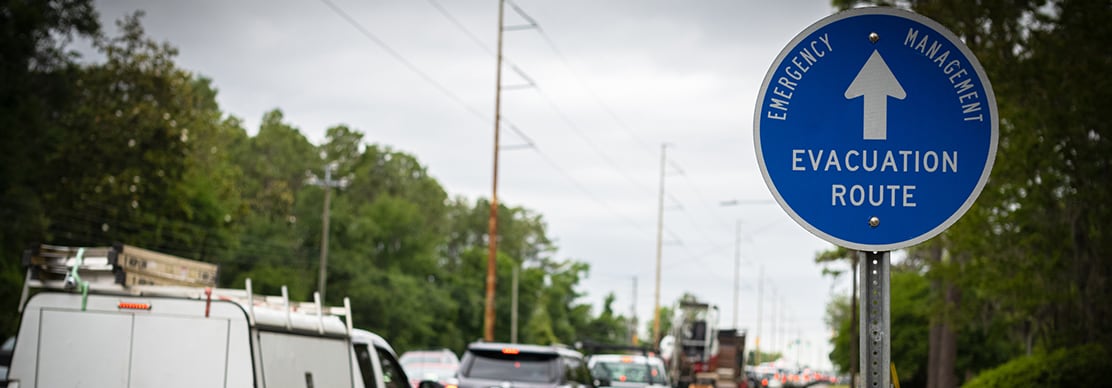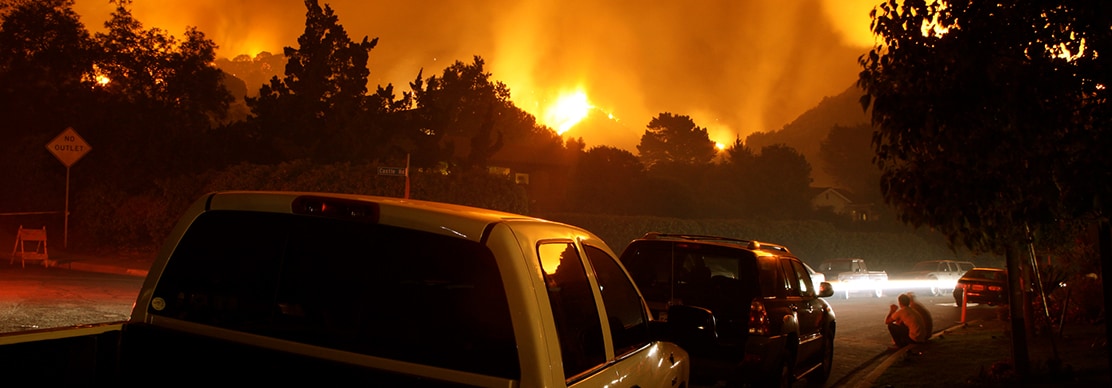#PrepYourHealth: MyEvacuation Plan
How can you prepare to evacuate in an emergency?
An evacuation is the organized movement of people away from dangerous or potentially dangerous areas and life-threatening situations.(1) It is one of the most common protective actions that people are most asked to take. Others include shelter in place and stay put and seal off your space.
A wide variety of natural disasters and emergencies can create the need for people to evacuate their homes and businesses. In 2017, over 8 million people across the nation were affected by evacuation orders issued in response to flooding, wildfires, and hurricanes.(1)
While 80% of respondents to FEMA’s 2019 National Household Survey said they have gathered enough supplies to last three or more days, just 48% said they have made an emergency action plan.(2)
In some instances, you may have time to prepare your family and their property. In others, you may not. In either case, it is important that you plan ahead (e.g., assess your capability to evacuate on your own and how you will reunite with others if you are separated), practice your plan, and follow the instructions of your local authorities.
Use this document to help you prepare for an evacuation. Work through the following three sections to create your own MyEvacuation Plan:
MyFamily | A plan to prepare your family for an evacuation.
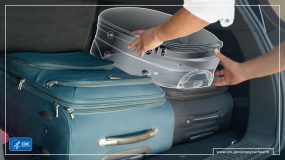
Planning is vital to making sure that you can evacuate quickly and safely no matter the circumstances. It is an important but often overlooked part of the preparedness process.
A first step to planning for an evacuation is gathering the essential supplies you and your family will need to stay healthy and safe away from home.
Use this checklist to help you prepare your family for the possibility of an emergency evacuation.
Update the contents of your “go kits” every six months or as the needs of your family change. Remove, throw away or use, and replace any items and supplies before they expire.
☐ Create a “go kit” for each member of your household. Set a yearly calendar reminder for yourself to re-think your family’s personal needs and update the kits as health, wellness, and medical needs change. Because of the COVID-19 pandemic, everyone should have a kit that includes:
- Masks that cover your nose and mouth and fit under your chin and snug on your face.(5)
- Hand sanitizer that contains at least 60% alcohol.(6)
- Disinfectant wipes (if available).
☐ Prepare your prescription medicines.
- Keep a list of your medications that also includes information on diagnosis, dosage, frequency, medical supply needs, and known allergies.
- A cooler and chemical ice packs for storing and keeping medicines that require refrigeration cold.
☐ Refill prescriptions. Some states have emergency prescription refill laws that authorize pharmacists to dispense early refills under an emergency declaration. Ask your health care provider or pharmacist about the law where you live.
☐ Stay up to date on all recommended vaccines for infections and illnesses.
☐ Collect, check, and protect your important paperwork, including insurance cards, medical records, personal identification, and emergency action plans.
- Digitize hard copies and save electronic copies of important papers in a password-protected format to an external hard drive or/and a secure online service.
- Store external drives and hard copies of important papers in a fireproof and water-resistant file organizer, container, or resealable storage bag.
☐ Prepare your personal vehicle.
-
- Create a roadside emergency kit that includes food, water, a first aid kit, backup power sources for your cellphone, jumper cables or a jump starter, road map, and a flashlight with extra batteries.
- Keep a full tank of gas in your vehicle if an evacuation seems likely.(7)
☐ Review your plan with others, including your family, out-of-state contact, and personal support network.
MyPets | A plan to prepare your pets for an evacuation.
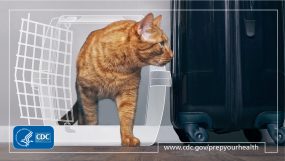
Pets are family too. Prepare for their needs by creating a pet emergency preparedness kit and including them in your emergency action plan.
Leaving pets behind during an evacuation can put them, you, and first responders in danger. Even if you try to create a safe place for them, pets left behind during a disaster are likely to suffer.
Use the checklist below to help prepare your pets to evacuate.
Practice evacuating with your pet. Make sure you have proper equipment for pets to ride in the car (i.e., carriers, harnesses, pet seatbelts). Put your pet in their carrier and take them for a ride in your vehicle. It is important to train your pets to be in their carriers. A normally calm cat or dog may act differently under stress.
☐ Microchip your pet. Finding a lost pet that hasn’t been microchipped can be difficult. If your pet is already microchipped, make sure to keep the registration information up to date.
☐ Purchase a pet carrier for your pet. Write your pet’s name and contact information on the carrier. Train your pets to be in their carriers by making it a comfortable place.
☐ Have pets wear collars and tags with their name and your contact information.
☐ Take a selfie with your pet to help identify your pet and prove ownership if you get separated in an evacuation.
☐ Know where your pet might hide when stressed or scared. Practice catching your pet, if needed.
☐ Pets and other animals are often not allowed in shelters unless they are service animals. Identify shelters or out-of-town friends or relatives where your pets and other animals can stay. Locate boarding facilities or animal hospitals near your evacuation shelter in case you are unable to return home right away.
Learn more about how to keep your pets safe during emergencies.
MyRoute | A plan to know where to go in an evacuation.
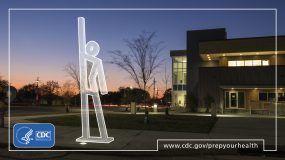
Emergencies and evacuations are stressful, especially when you’re not sure where to go, what to take with you, how to get there, and—in some cases—how you will get there.
Knowing this type of information before an evacuation can help make the experience a little easier to handle.
Use the checklist below to help you prepare for the stress of an evacuation.”
Many Americans rely on public and alternative (e.g., a bicycle, carpooling, or ride sharing) modes of transportation in their daily lives. These types of services may be unavailable in an evacuation. Explore your transportation options, such as arranging to carpool with someone who has a vehicle.
☐ Know your evacuation zone and route.
- Test drive your emergency (e.g., hurricane, wildfire, and tsunami) evacuation route.
- Know multiple ways out of your neighborhood. Your normal route may not be the safest during an emergency.
☐ Know the location of the nearest emergency bus pickup stop.
☐ Identify a safe place to evacuate to. The location of the nearest shelter can change year to year and between events.
- If you plan to stay with friends or family, talk to them about how you can protect yourselves from COVID-19.(8)
- Map the route to your destination. Share it with your out-of-state contact and others, including family and friends
☐ Know how you will evacuate. Have multiple transportation options if you don’t own a vehicle. Sign up for evacuation assistance if you need specialized transportation.
☐ Have multiple ways to stay informed:
- Watch and listen to local television and radio.
- Sign-up for local emergency alerts, where available.
- Turn ON Wireless Emergency Alerts on your cellphone.
- Follow trusted sources on social media, including your local National Weather Service Forecast Office.
Always follow the instructions of local authorities on where to go and how to get there. Listen for what roads to take. Don’t take shortcuts. Never drive around roadblocks, on flooded roads, or into standing water.
Reference
- https://www.fema.gov/sites/default/files/2020-07/planning-considerations-evacuation-and-shelter-in-place.pdf
- https://fema-community-files.s3.amazonaws.com/2019-National-Household-Survey.pdf
- https://www.cdc.gov/coronavirus/2019-ncov/easy-to-read/mask-guidance.html
- https://www.cdc.gov/coronavirus/2019-ncov/your-health/covid-by-county.html
- https://www.cdc.gov/coronavirus/2019-ncov/prevent-getting-sick/about-face-coverings.html
- https://www.cdc.gov/handwashing/hand-sanitizer-use.html
- https://www.ready.gov/evacuation
- https://www.cdc.gov/disasters/hurricanes/covid-19/prepare-for-hurricane.html
